Avoid These 10 Common Golf Swing Mistakes (With Easy Fixes)

Table of Contents
Common Golf Swing Mistakes
Identifying Golf Swing Mistakes
Identifying golf swing mistakes early can help improve your game. Recognizing the most frequent golf swing mistakes allows for early corrections.
Many golfers struggle with common golf swing mistakes, which can hinder their performance. Understanding these golf swing mistakes is crucial for improvement.
Key Takeaways
- We can improve our golf swing mistakes by fixing setup mistakes and maintaining proper posture, alignment, and ball placement for every shot.
- When we practice these drills to improve our grip, body rotation, and weight shifting, we’ll be building the foundation for an effective, consistent, powerful swing.
- Understanding our swing path and clubface alignment helps us correct frequent mistakes. This is everything from slicing to hooking to coming over the top.
- Bringing in targeted exercises to help with arm/hand/club action, timing and rhythm create more fluid and consistent golf swings.
- Adjusting our methodology and training regimen for the various clubs will help us to perform well with all 14 clubs we have in the bag.
- Regularly using actionable drills and creating checklists for each skill area helps us track progress and build lasting improvement in our golf game.
These typical golf swing mistakes frequently manifest in grip, stance, and timing. We see these tendencies create worrying habits that produce more costly missed shots and diminished distance control.
Most of us over grip the club or get too close to the ball. Like all the small things, they add up to a path and resulting ball flight.
Recognizing common golf swing mistakes allows golfers to make necessary adjustments for better performance.
By addressing common golf swing mistakes, golfers can achieve a more reliable and effective swing.
Analyzing common golf swing mistakes can reveal areas for improvement, leading to a more effective swing.
Many golfers are unaware of their common golf swing mistakes, making self-assessment vital for improvement.
Improving upon common golf swing mistakes requires practice and dedication to refine your technique.
By recognizing these golf swing mistakes right away, we create a game that’s easier and more enjoyable to build confidence with. Coming up, we take an in-depth look at each mistake individually. See The Complete Guide to a Perfect Golf Swing. Read the full post to learn how to avoid common golf swing mistakes.
Addressing common golf swing mistakes can enhance overall performance and enjoyment of the game.
Fix Your Faulty Golf Setup

If we analyze any swing issues, almost all of them stem from our setup. From this rushed or off-balance stance, you will have missed shots, weak contact, and lost power. Just like we focus on the minutiae to set ourselves up for a good golf swing—these alterations allow us to perform and remain on an even keel.
Here are three setup golf swing mistakes we see most often. Next, we repair them so that our swings are always doing the work for us.
Why Poor Posture Kills Power
When we have an overly rounded back or rigid back that saps all the power from our swing. Proper setup good posture begins with hinging from the hips, not the waist, to maintain a bit of knee flex. If we stand too tall or hunch our shoulders, then we restrict the energy that’s supposed to come from the ground and through our body.
We align our feet to about shoulder width and relax our arms. This wider stance will enable us to step in and out, as well as keep a nice neutral spine. This way we retain more energy for the swing. We use simple drills like placing a club across our shoulders and turning our upper body to build muscle memory for a solid posture.
Awareness of common golf swing mistakes is key to developing a more effective and enjoyable golf swing.
Master Correct Ball Placement
No surprise, ball position should change depending on the club use. For a driver, place the ball opposite your left heel. To hit iron shots, move the ball back to the middle of your stance. We hit all different areas at the practice facility.
We store in our minds an image of where the ball is supposed to be for each club. An at-a-glance visual guide—similar to placing down clubs on the range—allows us a reliable visual reference to align the ball correctly every single time.
Align Your Body Accurately
We want to square our shoulders, hips, and feet all so they are parallel to our target line. Creating a practice routine with alignment sticks helps guide our focus and tells us right away if we’ve started to stray.
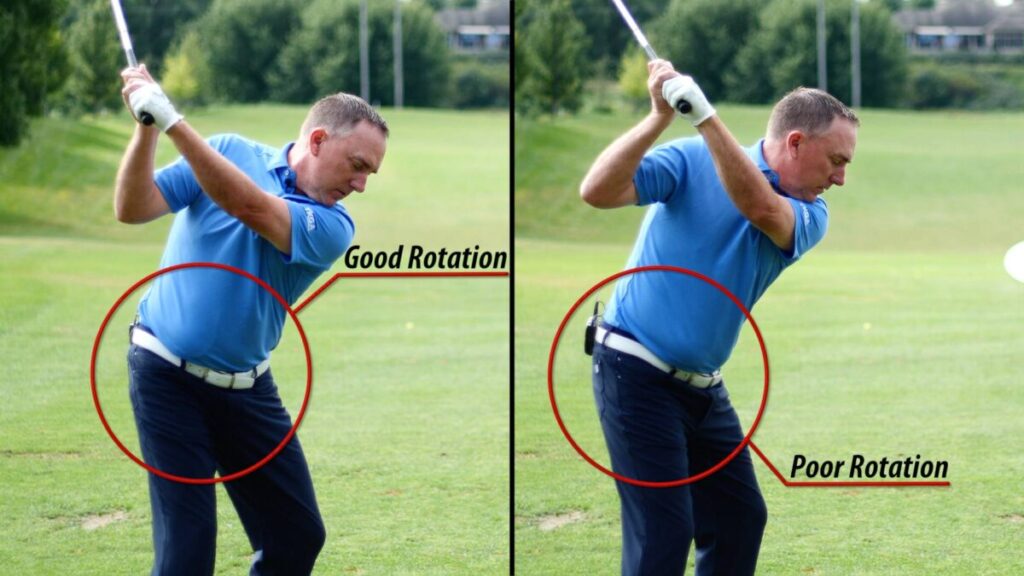
After every three shots we’ve made, we take a few paces back from the subject and re-evaluate our lines. This tendency will prevent us from noticing our bad alignment as it creeps in.
Avoid Excessive Grip Tension
A death grip results in a tension-filled, rigid motion that you’ll struggle to hit consistent shots. We hold the club just firm enough so it won’t slip, using the same grip pressure as holding a tube of toothpaste without squeezing any out.
We consciously take our grip and check it before each shot—an act that ensures we don’t grip too tightly and frees us to swing our best.
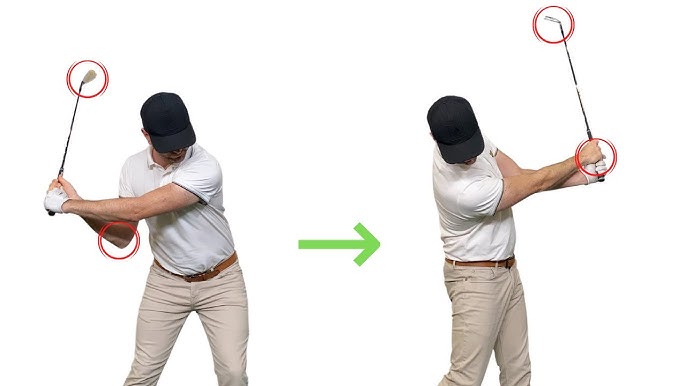
Understand Proper Grip Styles
We experiment with a strong grip, neutral grip, weak grip to find the one that best fits our natural swing. Every style brings a very different face angle at impact. Naturally, we’re going to select the one that produces the most consistent, quality golf shots that are flying straight.
We do things like grip too hard in the palm or let our hands separate. Next, we identify these faults and address them like a pre-shot routine.
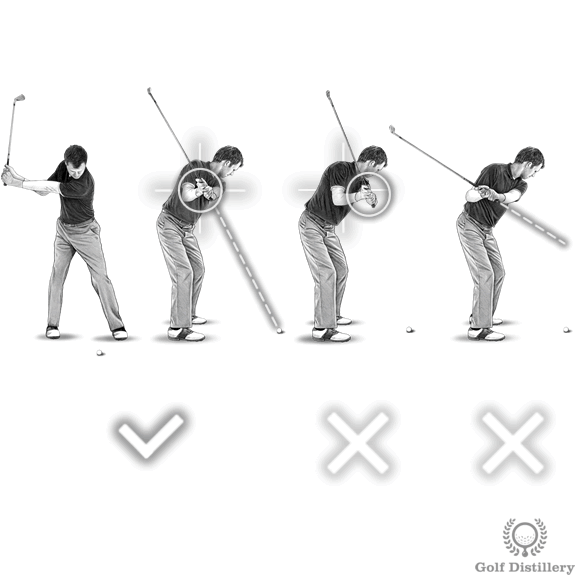
Master Your Body Mechanics
Their swing requires so much more than hitting balls with their arms. Each joint in our body—connection from our center to our periphery—works from our hips to our shoulders, to our legs and down to our feet. This collaborative effort is what allows us to hit well, maintain our strength, and stay healthy and pain free.
Proper mechanics do more than just help us shoot better, they help us shoot longer. With the right plays and some due diligence we can keep progressive wins rolling into our court.

Generate Power Through Rotation
Using rotational body mechanics – hip and shoulder rotation in particular – to generate power ensures a strong foundation to hit the ball far. When we allow our hips and shoulders to rotate together, the club releases speed. This type of motion sends the golf ball flying down the fairway, while placing less stress on our back.
Simple rotational drills, such as medicine ball twists or standing torso turns, make us accustomed to performing this move. When we see the swing as a turn and not just a lift, it changes how we use our muscles.
When the right arm and shoulder are rotated successfully, clubhead speed improves by almost 14%. In this manner, we achieve additional distance without having to hit the ball any harder.
Shift Weight Like A Pro
Implementing strategies to avoid common golf swing mistakes can significantly enhance your game.
Proper weight shift is the foundation of an effective swing. To properly load, first, start the weight on your back foot during the backswing. As you’re hitting that golf ball, allow that weight to transition nice and fluidly over to your front foot.
Drills such as the “step-through” swing can give us a sense of this transfer. We monitor our swing by looking at our feet and hips or by recording a couple swings.
Our checklist keeps us on track: start balanced, shift back, drive forward, and finish strong.
Eliminate Swaying For Consistency
Swaying, or a lateral movement side-to-side, ruins our shot. We spent a lot of time targeting the knees and hips, utilizing basic tools such as alignment sticks to help maintain alignment.
By practicing our full swings in slow motion we can easily identify any unnecessary motion. By focusing on this, we stabilize our lower body so the club can stay on its desired line.
Stay Balanced Throughout Swing
Balance is key, from the beginning to the end. We train with simple exercises, such as standing on one leg, to improve.

By mirroring ourselves or watching our techniques on video, we are able to identify any shake, drop or wobble in our movements. We check our knee flex, too, at setup, about 18°, and at the top, close to 33°, which helps us hold steady.
Complete Your Backswing Turn
Common golf swing mistakes include incorrect weight transfer and poor body mechanics, which can hinder performance.

For example, a complete shoulder turn helps us load our swing with serious power. For our backswing, we monitor our movement with mirrors or by filming swings, ensuring we achieve a solid top position.
TIG’s checklist self audit on shoulder turn, hip rotation and weight transfer has kept us on our toes.
Avoid The Dreaded Reverse Pivot
Reverse pivot occurs when our weight shifts the opposite direction toward the target in the backswing. We can see this by simply observing the direction our hips and chest are facing.
Drills that encourage you to shift your weight back, then forward, are key in correcting this. Broad feedback, such as “maintain weight over back foot,” help ground us.
For those experiencing back pain, reducing the size of the swing can do wonders to relieve tension on the spine even when standing. In reality, it only reduces our motivation by roughly 33 feet/4.5 mph club speed.
Correct Your Swing Path Errors

At varying levels, beginner golfers often face swing path errors that affect their performance. These errors can lead to miss-hits, causing shots to go astray and not land where expected. Common mistakes include coming over the top, an inside takeaway that gets too deep, and having an open clubface at impact, which can result in a slice or a hook.
Most golfers experience frustrating shots like a big shank or a duck hook on the course, and they may feel disconnected from their club. What many players struggle with is identifying the root cause of these issues. To improve, it's crucial to find balance and establish a proper ball position, along with a strong grip, to enable a perfect swing path.
Have a strong mental image of how that club needs to travel. The perfect swing path is much more of an inside to outside arc, and at the bottom the clubface should be perfectly square when striking the ball. The additional path visual we get by using alignment sticks or HackMotion feedback provides us with a powerful visual to help lock in that path change while practicing.
Stop Coming Over The Top
The over-the-top move often cuts drives left or right and really tends to compromise the reliability of your irons. We can identify this by looking for a club that approaches the ball from outside the target line and over the top.
To correct it, we do drills like the split-hand drill and the headcover drill. In the headcover drill, we use a headcover several inches outside the target line and swing just inside it.
Turning our trail foot out 20–25° allows our hips to turn more freely, which aids the club dropping inside. For reminders, we use a quick checklist: check our grip, set up with feet close together for better balance, and make sure our weight shifts from the lead foot, back, then forward again.
Cure Your Slice Permanently
Slicing typically occurs when the face is open at impact with too steep of a path coming from the outside-in. Checking our grip for a neutral spot and using a 3:1 tempo count helps square things up.
One way is that we usually train with a HackMotion device to get instant swing path feedback. Swinging with a towel tucked under our lead arm, or hitting from a very low tee, are great drills.
They can get us to swing on an inside-out path and minimize our slices.
Tame That Unwanted Hook
Hooks are the result of a closed clubface at impact, and grip too strong. We correct this by rotating our hands further forward towards our target and maintaining a square stance.
Drills like pausing at the top and checking hand position, or swinging with an alignment stick down our target line, help reduce hooks.
Achieve Optimal Attack Angle
How we hit down or up on the ball affects impact and distance. With wedges, we desire a steeper path. With drivers, somewhat more level or upward.
Drills like hitting off a small tee or using HackMotion feedback give us real data to check our attack angle.
Square The Clubface Consistently
Putting a square clubface to the ball produces straight, predictable shots. Using training aids like face tape or impact stickers allows us to visually key in on our miss.
We all have a grip check list, a slow-mo swing check list, face alignment drill checklist—we’re all just trying to be sharper.
Refine Arm and Hand Action
When my arm and hand action are dialed in with my swing, my entire shot is affected. I’m seeing a lot of the same, unfortunate errors. Arms shoot out, wrists lock, and hands turn over at the ball—all killing my tempo and robbing me of yards.
Focusing on correcting common golf swing mistakes can lead to significant improvements in distance and accuracy.
If my elbows go too far out from my side, I lose that control and I send shots flying wide. A good, fluid, repeatable swing ensures that my arms stay tucked to my body. My hands and wrists make purposeful movements, not just airy gestures.

Keep Elbows Connected Properly
To keep my elbows from jutting outward, I had to ping the inside of my elbows against my ribs to create a stiff swinging arc. Flaring elbows introduce a lot of inconsistencies, so I’ll do some drills where I’ll hold a towel between my elbows while I’m swinging.
This prevents my elbows from flaring the entire time from start to finish. When I hit, I really try to swing and let the elbows go down to the hips. In practice, I try to avoid letting them flare out to the walls. That one picture makes it come alive and helps me really lock it in each time.
Initiate A Smooth Takeaway
My swing begins with a nice, controlled takeaway and not a sudden yank. I was finding my groove with deep, languorous half-swings. I’m trying to hold my club moving back in one piece with my shoulders and my arms.
That is why practicing with a metronome or counting in my head goes a long way to keeping me more confident with the tempo. I check off these points: clubface square, arms close, wrists soft, and body turning together.
Release The Club Correctly
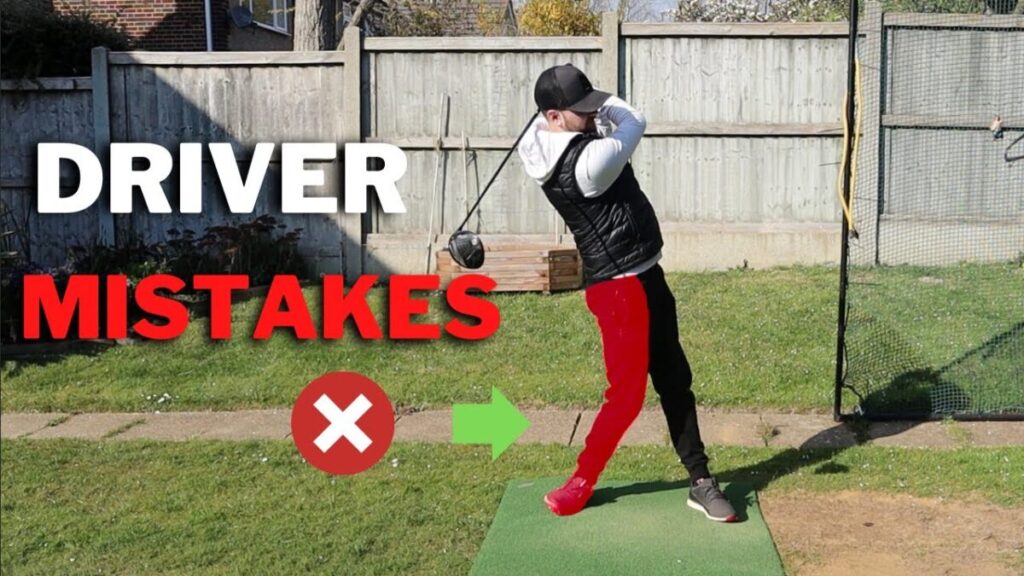
It was when I learned how to release the club correctly that my game began to improve. For my downswing, I hope to still get that “motorcycle move”—lead wrist flexion—to square the face.
It’s not analogous to revving a throttle, which would be wrist extension. Instead, I rotate my wrist as though I’m opening a door. This one change increased my distances by twenty yards and decreased my shot spread from seven yards to three yards.
I watch my release in a mirror or use a HackMotion sensor to track my wrist angles and make sure there’s no tension.
Fix Problematic Wrist Angles
For me, if my wrists become bent or cupped, my shots are going off line. Drills with HackMotion ensure I’m practicing holding neutral wrist angles. I jot down reminders: flat lead wrist, slight flexion at the top, no excessive bend.
Having this list to refer to before practice forces me to be disciplined.
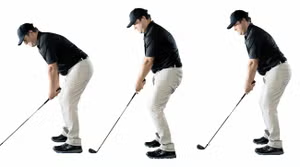
Avoid Scooping At Impact
Unfortunately, scooping at impact is a death blow to my power. I need a jab motion, not a digging motion. I installed drills that focus on making contact with a little forward shaft lean.
Last but not least I work on getting the grass immediately after touch. Thoughts such as “please hit down and not up” and “hands in front at impact” are taped to my golf bag.
Using HackMotion while I’m working on tempo really brings it full circle. Only Moehogan and Nitram accurately describe these moves. Properly equipped, I think I can make some pretty big strides.
Develop Better Timing and Rhythm
Developing better timing and rhythm informs each and every take we do. When our swing is in sync, the clubface remains square, and we achieve greater accuracy and consistency with our shots. We use timing and rhythm to lead us in all areas of the game.
This mentality shapes how we play our long approaches, how we lay up, and how we putt. By establishing a consistent swing tempo, it prevents the urge to rush or overpower the club and leads to an inconsistent shot. Even top pros stick with a 3:1 tempo—three counts on the backswing, one count through to impact.
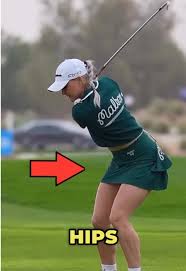
When we train with technology such as HackMotion, we limit our wrist angles and ensure our clubface stays square over a consistent path. This additional layer of accountability aids our rapid growth and helps produce more consistent golf.
Find Your Ideal Swing Tempo
To an equal degree, everyone has their own swing tempo. Let’s try some other speeds, and see which ones seem most comfortable. A metronome ticking at a consistent tempo can provide the perfect guide to our rhythmic steady flow.
Many of us play a favorite tune with a strong beat to help sync our swing. We track our journey with one of the most elementary instruments to narrate tempo, running a blog about how every tempo seems and what outcomes they lead to.
By viewing creatives like Amy Yang, we get a direct example of a smooth tempi at work—an incredible experience that really benefits our learning process. We use the “one-two-three—one” count in our head, matching the 3:1 ratio that top golfers use.
This method is effective for all aspects of the game. Even on putting, we stick to a 2-to-1 ratio—“one-two—one”—to help develop a consistent roll.
Stop Swinging Too Violently
The more you go all out with the swing, the worse control you get. There’s nothing like precision. If you want clarity and improved detail, go for a slower tempo with more control of your movement.
Drills such as the half swing allow us to create this habit. Beginning with a shorter swing allows us to work on timing, then we lengthen as we progress. We keep a checklist handy: relax our grip, focus on smooth takeaway, and keep our finish balanced.
Being alert to these signals prevents us from unintentionally over-swinging.
Accelerate Through The Ball
Distance and accuracy both spring from strong acceleration. We train in drills so that we can feel the club get faster through impact, not before. A clean follow-through, as weight rolls back onto the lead side, gives us that added jolt.
We take note after every session—how we’re feeling on our shots, and if we’re achieving that surge at the optimal moment. HackMotion allows us to observe these changes in real time.
Finish Your Swing Fully
A rich, nuanced close provides a strong payoff for the story. We concentrate on maintaining our finish until the ball hits the ground. We’ll monitor our weight on our front foot and that our body is turned to face the target.
Basic cues such as “fix the line” and “lengthen” help us focus. Swing drills that emphasize follow-through encourage us to feel the swing operating as a timed, flowing, continuous motion.
Sharpen Your Mental Golf Game
Golf is every bit as much a mental game as it is a physical one. That’s because mental toughness is often where good golfers distinguish themselves from bad golfers. A round can quickly extend past three hours. For most of that time, it’s probably safe to say we won’t be able to concentrate on more than one idea at a time.
The more we train our minds, the more we recognize the pitfalls. That’s what makes every single round fun and fulfilling! Remember, most pros, including Tiger Woods and Jack Nicklaus, teach us that power is great, but accuracy and concentration wins – genius over muscle power.
Having a strong mental game means we embrace the pressure, maintain our concentration, and trust our preparation and the fundamentals that make us successful.
Build A Reliable Pre-Shot Routine
A consistent pre-shot routine is one of the best ways to reduce tension before every shot. We know both top players and weekend golfers use routines to line up their body and mind for a good shot. For us, this could look like two deep breaths and reminding ourselves of our intended line.
Finally, upon set up, we take one last waggle before taking our swing. Our choreography is carefully scripted down and rehearsed multiple times over until the process becomes second nature. Once established, our practice turns into a subconscious pattern—like how we tie our shoes—allowing us to rely on it even when the pressure is on.
Once we get up to the ball, excitedly we go down our checklist. We adjust our grip, select a target, and establish our stance. This habit empowers us with a sense of peacefulness, allowing us to compete and play our very best.
Maintain Focus During Swing
Distractions on the course are plentiful, whether it’s a loud group in a cart or your mind racing. Today we’ll explore why staying locked in is a skill we develop through practice. These mindfulness tricks help us stay focused on the here and now.
For instance, we can focus on one dimple on the golf ball or the texture of the ground we are standing on. We quit pursuing swing fixes on YouTube, and we tune out the golf pundits in-season. Instead, we allow our minds to expand, dream and unwind.
To help us stay focused, we rely on little mental triggers – “smooth and steady” or “follow through” – to help us clear our heads. Through practice, we learn to dismiss distracting thoughts more easily and play each shot as it comes.
Overcome The Urge To ‘Hit'
Many of us get caught up in the idea of “hitting” the ball rather than swinging through the ball. The secret is understanding that a smooth, free wheeling swing is far more effective than an effortful swing at generating power.
We practice with drills that focus on rhythm and flow over force and power. Our collection of golf swing reminders would probably start with things like, “swing through, not at,” and “let the club do the work.
With consistent practice and attention to the swing itself—not just the outcome—your shots will improve and your game will be more enjoyable.
Adapt Swings For Different Clubs
Almost every club in my bag needs a different swing. Knowing the reason for these tweaks allows me to make better shots and miss less often. Different clubs have different lengths, lofts, and weights that can significantly change how they perform.
To play a better round, I adapt my swing with every club. Everything from my setup, grip, and tempo all change slightly based on which club I decide to grab. A basic pre shot routine—grip, stance, alignment—works as a self-check to get me focused.
Rather than overwhelming students with sweeping swing adjustments, I focus on miniscule tweaks to their tempo or swing ratio. In this manner, I retain my overall swing pattern but adapt it to the specific club. Pair that with a feedback tool like HackMotion and the value increases tremendously.
Instead, with this, I’m able to get still in real-time cues, and it’s really allowed me to maintain my clubface square. According to their data, the majority of golfers experience positive swing gains using this type of device.
Driver Setup And Swing Keys
For the driver I was standing with feet really wide and ball position off the inside of the left foot. My hip and shoulder move with the club to create torque and generate clubhead speed to produce longer drives. My first point of focus is my grip, ensuring that it’s strong enough to have more clubface control.
Drills that focus on launching the ball and path of the club through impact drastically improve my game. For example, teeing the ball up and taking full swings really improves my vertical and distance. I always check: strong grip, feet wide, ball forward, and my right shoulder and hip moving through with the club.
Fairway Wood Faults To Fix
Fairway woods love to play tricks on ya with that thin, topped or burned variety. I generally play my setup with my feet slightly wider than shoulder width and the ball position slightly forward of center. I incorporate drills that allow me to sweep the ball off the turf.
Slow motion swings and hitting off very short grass ensures my contact is always on point. Whenever I begin to slice or chunk, I first look at my grip. Next I check to make sure my shoulders are parallel to my target line and not just pointing at the flag.
Hybrid And Long Iron Tips
Hybrids and long irons require a more downward, more gradual swing than that of a fairway wood. I set up with the ball about one or two inches inside my left heel, grip steady, and a slight tilt in my spine. Drills where you brush the grass after the ball really help me get that clean crisp contact.
I keep a checklist: steady grip, small spine tilt, ball forward, and a calm swing tempo.
Improve Your Chipping Action
Chipping works best when I stick to basics: feet close, weight forward, and hands ahead of the ball. I like a lot of drills for that feel and control from one-handed chips to landing on a towel.
When I chunk or blade a chip, I reset my stance and focus on keeping my hands forward. Preventing my wrists from flipping and follow-through from extending has been necessary as well.
Pitching Consistency Techniques
Pitching is much easier with a consistent mechanic – going on a split stance, ball in center, and weight on my front leg. Having drills in my back pocket such as half-swings and holds at the finish allow my swing to remain repeatable.
I run through my list: steady grip, open stance, weight forward, eyes on the landing spot.
Actionable Drills For Swing Flaws
Almost every beginner golfer faces these same common golf mistakes, and we’ve learned that basic but concentrated drills work effectively in helping us eliminate them. We make sure to keep our practice authentic, focusing on proper ball position and reviewing our progress each practice. Here’s how we dissect each shortcoming and combat swing faults to fortify our swing.
1. Drill To Correct Poor Posture
We utilize wall drills to help instill postural positions. Standing with your back against a wall, start in the position you would take to swing, keeping your back and your tailbone in contact with the wall. This will give us a better sense of the angle we want to achieve.
Repetition of this type engrains muscle memory. We check posture checkpoints each time: knees flexed, back straight, weight balanced, and chin up.
2. Exercise For Better Weight Shift
To load our weight properly, we match the feel with lead-side loading drills. Start with 60% of your weight on your lead foot. Hit bump hips towards target and then swing!
Eliminating common golf swing mistakes is an ongoing process that requires commitment and self-awareness.
We measure the weight shift by initially shifting the weight back a bit. From here, on the downswing, we very aggressively drive that club head back down toward the lead foot. We like to flare the trail foot out 20-25° to promote hip turn.
3. Fix An Over-The-Top Move
We’ve had a lot of success dropping the hands inside by putting a headcover just outside the ball on a line. If we make contact, then we’re already capping it out.
We utilize a “one-two” count to the top of the backswing, and then swing down, creating that feeling of the inside-out path.
4. Simple Slice Correction Drill
We hold the club a little stronger and open the clubface a little. If they start going off course, we have alignment sticks to keep everything aligned.
Golfers need to recognize common golf swing mistakes to elevate their performance and overall enjoyment of the game.
We begin with one half swing and monitor the reduction percentage of how many shots cut in much less or straighten out solely.
5. Improve Rotation And Turn Drill
We work on hip rotation by merging a hip bump with the HackMotion Casting Drill. This allows our lower body to catch up and prevents us from getting AI lag.
We ensure the trail foot is flared out to facilitate greater amounts of hip turn.
6. Stop Early Extension Practice
We implement a chair behind us, maintaining our posterior in contact all the way through the swing. This helps maintain posture throughout the swing and prevents early extension.
We measure progress by how lightly we can remain rooted to the Earth.
7. Cure A Weak Grip Habit
We practice grip changes while observing the open clubface at the top and at impact. Many golfers measure grip strength prior to each swing and analyze the common grip mistakes that occur.
8. Enhance Swing Rhythm Exercise
A 3:1 swing tempo or HackMotion feedback gives beginner golfers real-time rhythm. We like the simple count and pay attention to how tempo is affected under pressure during practice swings.
9. Drill For Squaring Clubface
We do a lot of half-swings with a glove placed under our lead arm, which helps beginner golfers connect their arms and promotes squaring the clubface at impact.
10. Balance Improvement Technique
When we peered through cameras at these classic shots, we tested balance with shots on one foot or feet close together, greatly developing golf skills while tracking how many quality shots we make, a common mistake many golfers face.
Conclusion
We know how unpredictable golf can be. Fixing common golf swing mistakes is actually simple once you know how to do it. As you can see, each tip we provided is rooted in practice. They prevent us from hitting some of the worst shots we envision, both in practice and on the course. With adjustments such as having hands at rest and the mind aware, we define and refine our swing. Consequently, our games begin to backfire. On our next round, we see these pointers come into play and see the improvement for ourselves. Have a tale of a swing adjustment that paid off with some positive results for you? Shoot us a message or tell the community in the comments. We keep ourselves on our toes by putting ourselves in a learning mode alongside you. Here’s to more victories, one swing at a time.
Frequently Asked Questions
What are the most common golf swing mistakes for beginners?
Many beginner golfers often make the common mistake of gripping the club too tight, standing tall and flat-footed, and swinging too fast, leading to inconsistent shots and a loss of distance.
How can I improve my golf swing setup?
Pay attention to proper alignment, a balanced stance, and correct ball position, as many beginner golfers often overlook these aspects. A good setup leads to more consistency and helps avoid common golf mistakes.
Why does my golf ball slice or hook?
A slice or hook is typically the result of incorrect grip or an open clubface angle at impact. Many beginner golfers can easily fix direction shots toward the target by correcting their swing path and alignment.
How important is timing and rhythm in the golf swing?
Timing and rhythm are extremely important for beginner golfers. When you make a smooth, coordinated swing, you create much better contact and distance, helping to avoid common swing faults.
What drills can I do to fix my swing flaws?
Utilizing slow motion swings and alignment sticks in your practice drills can help beginner golfers retrain their swing muscle memory, eliminating common golf mistakes and improving overall golf skills.
Should I change my swing for different clubs?
The answer is yes, many golfers do have to adjust their swing for different golf clubs. A driver swing is much wider and more sweeping, whereas an iron requires a much steeper, downward blow to ensure proper ball position and contact.
How does mental focus affect my golf swing?
When beginner golfers are calm and focused, there is less tension and less overthinking, leading to a more enjoyable golf experience and improved consistency.
This article contains affiliate links. If you purchase through them, I may earn a small commission at no extra cost to you. See our Affiliate Disclosure.






